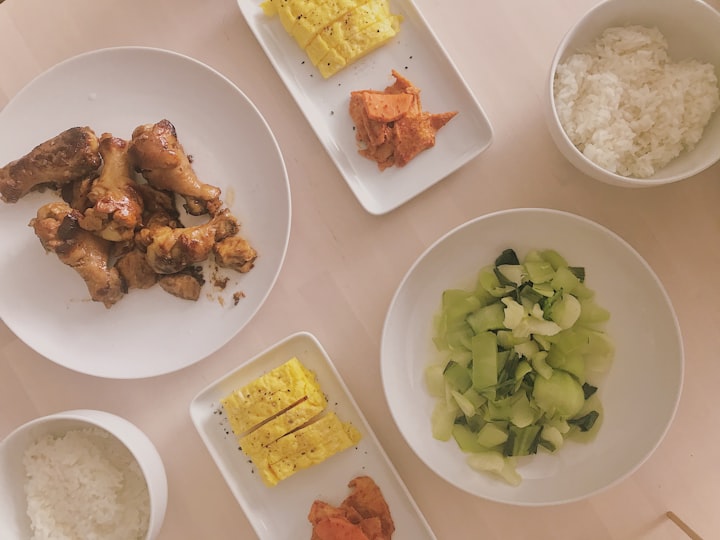The Pros and Cons of the Latest Fad Diets
Know what they are, their pros, and cons before taking any extreme step

There are so many diets and food fads that come and go every year. Some people swear by them, while others say they’re bad news, especially if you’re looking to lose weight and keep it off in the long run. It can be hard to discern fact from fiction when you’re sifting through all the claims about what diet will work best for you and why, but one thing is clear—no single diet works for everyone, nor does any one diet work forever.
Paleo Diet
If you’re someone who can tolerate grains, dairy, fruit, and legumes—and if you’re willing to give up almost all processed foods—then going Paleo is an excellent way to lose weight. Not only will it improve your digestion, but it will also greatly increase your chances of keeping off extra pounds in an increasingly sedentary culture. If that doesn’t sound like a plus, there are other potential health benefits, including better blood pressure levels and decreased risk for type 2 diabetes. On top of that, research shows that people who eat lots of meat and fish tend to have healthier hearts than those who don’t.
Pros:
-First, the Paleo Diet is a diet that is based on the foods that our ancestors ate. It's a diet of lean meats, fish, fruits, vegetables, eggs, nuts and seeds. It's high in fiber, antioxidants, potassium and healthy fats. -There are no processed foods, no refined sugars and no grains.
-The Paleo Diet is low in sodium, saturated fat and cholesterol.
Cons:
-The Paleo Diet is not a low-carb diet, which has gotten a bad reputation. It's actually a moderate-carb diet.
-It can be difficult for vegetarians especially since it excludes beans.
Gluten-Free Diet
Gluten is a protein found in wheat, rye, barley, spelt, kamut, triticale and oats. The term gluten has come to be used as a catch-all phrase for any food that’s bad for me. But despite its popularity as a new diet trend, gluten-free eating may not be healthy—or sustainable. A study published in Gastroenterology showed that people who followed a gluten-free diet had higher levels of triglycerides (blood fats) than those who didn’t follow such a diet. This finding suggests that cutting out gluten could actually increase your risk for heart disease, even if you don’t have celiac disease or non-celiac gluten sensitivity.
Pros:
-It helps to treat celiac disease and glutent sensitivity.
-It is generally nutritious and offers food preference flexibility.
-It is generally safe and adapts to dietary restrictions.
Cons:
-It is low in fiber and can also be low in other nutrients.
-It can be inconvenient to remove from your diet and require more planning.
Ketogenic Diet
There’s no question that one of the most popular new diets is also one of our oldest, dating back to when a man named William Banting first ate only vegetables, fruits, and small amounts of meat in hopes that it would keep him from gaining weight. The same premise was used again in 1921 when Dr. Russell Wilder developed a very low-carbohydrate diet that worked with type 1 diabetes. Both diets were so successful that they became widely known as the Banting Diet and the Wilder Diet, respectively. Today, ketogenic (or keto) diets are among some of the most popular fad diets around—and for good reason: They work!
Pros:
-It has many health benefits, including weight loss (provides quick weight loss), improved endurance, lower blood glucose, reduced risk of heart disease and diabetes, lower cholesterol levels and improved overall health.
-It is a great diet for those looking to improve their health and body composition.
Cons:
-It is difficult to sustain.
-It may lead to deficiencies in nutrition.
Free Cookbook: 21 Easy And Healthy Keto Recipes You Need To Try!
Raw Food Diet
This high-fiber, low-fat diet involves eating all sorts of raw fruits, vegetables, seeds, nuts, and seaweed. Eating a raw food diet is one way to ensure you’re getting enough vitamins and minerals. What’s more, most followers say that their moods improve and they feel less hungry when following a raw food diet. On the downside: The high cost involved with purchasing fresh fruit juices every day is enough to turn anyone off. If you decide to go raw, be sure to stick with it for at least two weeks before giving up on it entirely—and don’t make any drastic changes (like going from vegan to raw) until after consulting your doctor. It may take some time for your body to adjust, so be patient and kind as you transition into eating healthier.
Pros:
-It might be high in natural sugar from fruit, but low in added sugar.
-It is high in fiber content.
-It is low in sodium which can help reduce the risk of heart failure, hypertension, and chronic kidney disease.
Cons:
-It may not be balanced since it tends to have low amount of calories.
-It may also cause an unhealthy relationship with food.
-Risk of food-borne disease might increase since it is raw.
Conclusion
The great thing about fad diets is that they are so much more than just another diet: They’re an exciting way to challenge yourself, break out of your food rut, try something new and ultimately help you achieve better health. While these diets aren’t for everyone, if you find one or two that appeal to you and don’t have adverse effects on your health, go for it!





Comments
There are no comments for this story
Be the first to respond and start the conversation.